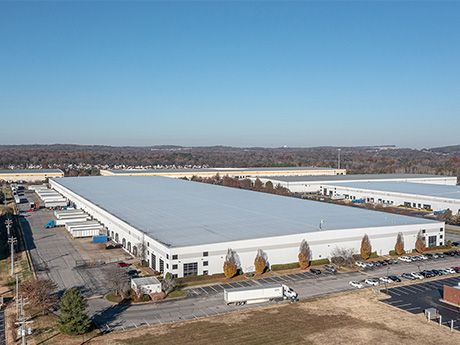Nashville’s industrial real estate market closed 2024 with a clear message: this metro is a logistics juggernaut, blending robust demand, strategic location and a dynamic investment landscape. With a vacancy rate ticking up to 4.1 percent in the fourth quarter amid new supply, yet absorption exceeding 4.2 million square feet year-to-date, the market’s resilience stands out.

Rents climbed to $9.94 per square foot, and industrial sales topped $1.4 billion — a 37 percent surge year-over-year. The takeaway is unmistakable for stakeholders: Nashville’s industrial sector thrives on its ability to absorb growth while signaling new opportunities for 2025.
Economic engines
Macro and local economic trends underpin this strength. Nationally, e-commerce sales hit $308.9 billion in fourth-quarter 2024, a 9.4 percent increase year-over-year, according to Commercial Edge. This uptick amplifies demand for warehouse and distribution space. Locally, Nashville’s job growth moderated to 0.9 percent in 2024, according to Oxford Economics, down from 3.2 percent in 2023. But industrial sectors shone in the report: manufacturing jobs grew 2.2 percent and trade, transportation and utilities grew by nearly 0.5 percent.
The Nashville Area Chamber of Commerce reported that 79 percent of 2024 business relocations and expansions involved industrial users, promising 3,309 new jobs. With a projected 6.4 percent population increase over five years, Nashville’s labor and consumer base continues to attract occupiers and investors alike.
Spotlight on major projects
Development activity reflects this momentum. Nearly 4 million square feet of space remains under construction, with 5.9 million more slated for 2025 delivery. A standout is the 541,500-square-foot lease by Schneider Electric at 800 Maddox Road in the East submarket, a speculative project by Panattoni Development that underscores the area’s appeal.

Similarly, Store Opening Solutions LLC renewed 644,078 square feet at 800 Middle Tennessee Blvd. in the Southeast submarket, signaling confidence in existing inventory. These projects, alongside 1.9 million square feet of fourth-quarter leasing, highlight how new and existing spaces fuel growth, though the influx of supply may temper vacancy rates in the short term.
Hotbed of activity in East
The East submarket is emerging as a hotspot, boasting a 3.4 percent vacancy rate — the lowest among Nashville’s high-inventory areas. Spanning over 60 million square feet, the submarket absorbed 1.5 million square feet in 2024, driven by its proximity to I-40 and Nashville International Airport.
Projects like Central Pike Business Center, which sold to The Freeman Group for $14.5 million, exemplify the submarket’s investment allure. Its logistics advantages and tight conditions make it a magnet for tenants like Nissan (233,200-square-foot renewal at 1900 Midway Lane) and investors seeking stable returns.
Sales: velocity and players
Industrial investment sales accelerated in 2024, with MSCI Real Capital Analytics ranking Nashville No. 17 nationally for transaction volume. The $1.4 billion in deals outpaced the U.S. average growth rate by 32 points, closing at $143 per square foot — above the national $134 per square foot.
Buyers range from regional players like JC Ford Co., which purchased 2003 Oakland Parkway for $20 million, to individual investors like Todd Blanton, which bought 1046 Avondale Road for $10.5 million. Sellers, often developers or funds capitalizing on peak pricing, include those offloading assets like Airport South Business Center ($7.8 million to Scott Porter). High interest rates haven’t deterred activity; instead, Nashville’s fundamentals — located within a 250-mile radius of 29.1 million people — keep capital flowing.
Upward rents, with a caveat
Rents rose 5.6 percent over the trailing four quarters to $9.94 per square foot, outstripping the national average by over 200 basis points. This growth reflects tight conditions, with warehouse availability at 4.8 percent and sublease space at 1.2 percent.
Yet, the 4 million square feet delivered in 2024 nudged vacancy up 40 basis points, hinting at potential moderation in 2025 as construction slows. Submarkets like East ($9.69 per square foot for warehouses) and Southeast ($9.51 per square foot) lead the way, driven by demand for modern logistics space.
Nashville’s industrial market is at a pivotal point. Its ability to absorb 1.2 million square feet in the fourth quarter while welcoming new supply showcases adaptability. The Urban Land Institute’s No. 5 ranking for Nashville in its Emerging Trends in Real Estate 2025 report reinforces the city’s trajectory.
For investors and occupiers, the focus is clear: leverage Nashville’s logistics edge and monitor submarket dynamics as supply and demand recalibrate. Looking ahead, Nashville is a market built for the long haul.
— By Max Smith, SIOR, and Zac Cypress, CCIM, Principals and Executive Vice Presidents of Colliers. This article was originally published in the April 2025 issue of Southeast Real Estate Business.


